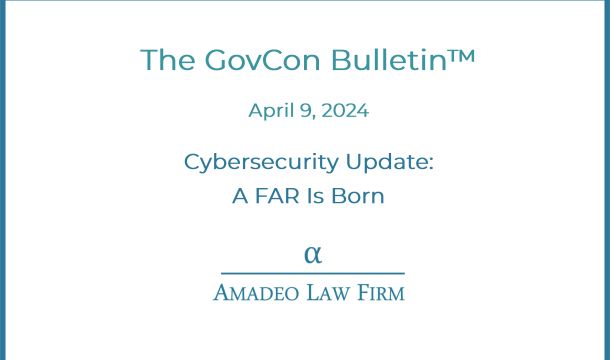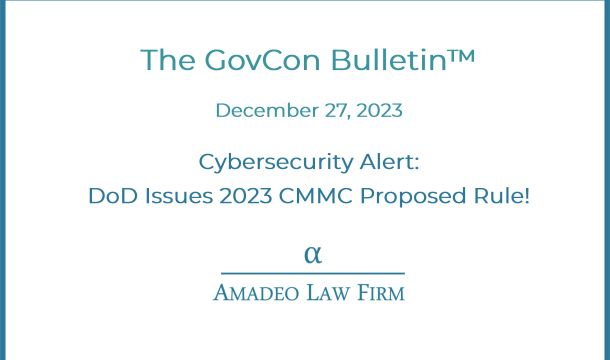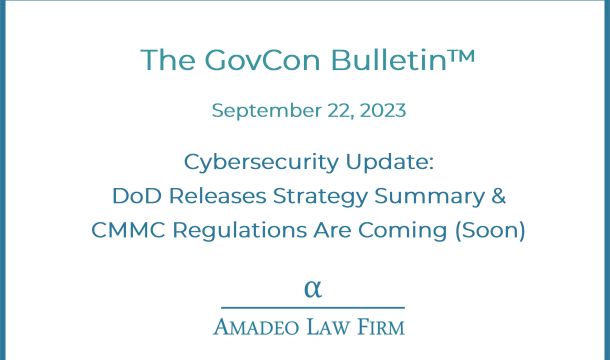SBA’s Agenda Anticipates Significant Rule Changes To WOSB, SDVOSB, And HUBZone Programs
Last week the SBA published its semiannual Regulatory Agenda (the “Agenda”), which is a summary of current and projected regulatory actions and completed actions. The Agenda (which can be downloaded here) highlights several anticipated changes to regulations that impact small business government contractors, including women-owned small businesses (WOSB’s), service-disabled veteran owned small businesses (SDVOSB’s) and HUBZone small businesses. Below are several of the anticipated changes that government contractors should look out for in the very near future.
WOSB & EDWOSB Certification Procedures
As we wrote about in a prior edition of The GovCon Bulletin™ (here), the National Defense Authorization Act for Fiscal Year 2015 (NDAA 2015) imposed several mandates on the SBA’s WOSB program, including a requirement that a firm be certified as a WOSB or economically-disadvantaged women owned small business (EDWOSB) under one of four options: By a federal agency, by a state government, by the SBA, or by a national certifying entity approved by the SBA. The SBA subsequently issued an advanced notice of proposed rule-making on December 18, 2015, again described in the same edition of the The GovCon Bulletin,™ in which the SBA raised several pointed questions and sought public input on each of the four proposed certification options. The comment period ended on February 16, 2016 and now the SBA intends to issue a new rule that will propose certification standards and procedures. In addition, the new rule will revise procedures for continuing eligibility, program examinations, protests and appeals. Although not much is known about the specific changes, the SBA did make clear that the new certification procedures will include an electronic WOSB and EDWOSB application and certification process.
NDAA 2016 & 2017 Mandated Rules
The Agenda also anticipates that in the near future the SBA will implement a variety of rule changes required under the National Defense Authorization Act for Fiscal Year 2016 (NDAA 2016) and National Defense Authorization Act for Fiscal Year 2017 (NDAA 2017), including requirements concerning SDVOSB ownership and control, a pilot program granting past performance ratings to subcontractors, and subcontracting report compliance.
1. SDVOSB Ownership And Control Rules
The Agenda indicates that the SBA will issue a proposed rule establishing a uniform definition of a “small business concern owned and controlled by service-disabled veterans” that will be used for SDVOSB procurements by both the Veterans Administration (VA) and by non-VA agencies. Before NDAA 2017, the definition for purposes of VA SDVOSB procurements was contained in VA statutes under former 38 U.S.C. 8127(l), while a different definition for non-VA procurements was contained in SBA legislation under 15 U.S.C. 632(q)(2). Meanwhile, regulations fleshing out the SDVOSB definitions for purposes of VA procurements are under the VA’s regulations in 38 CFR Part 74 and, for purposes on non-VA procurements, under the SBA regulations in 13 CFR Part 125.
NDAA 2017, however, requires a government-wide uniform definition by amending 38 U.S.C. 8127 to refer back to 15 U.S.C. 632 for one controlling definition. Moreover, NDAA 2017 clears the way for the SBA to provide the sole and definitive guidance on what it means to be owned and controlled by a service-disabled veteran by prohibiting the VA from issuing regulations relating to either small business status or the ownership and control of a small business.
As for the new uniform definition of “small business concern owned and controlled by service-disabled veterans,” NDAA 2017 provides three categories of businesses that will meet the definition:
First, a small business concern (i) not less than 51 percent of which is owned by one or more service-disabled veterans or, in the case of any publicly owned business, not less than 51 percent of the stock (not including any stock owned by an ESOP) of which is owned by one or more service-disabled veterans; and (ii) the management and daily business operations of which are controlled by one or more service-disabled veterans or, in the case of a veteran with permanent and severe disability, the spouse or permanent caregiver of such veteran;
Second, a small business concern (i) not less than 51 percent of which is owned by one or more service-disabled veterans with a disability that is rated by the Secretary of Veterans Affairs as a permanent and total disability who are unable to manage the daily business operations of such concern; or (ii) in the case of a publicly owned business, not less than 51 percent of the stock (not including any stock owned by an ESOP) of which is owned by one or more such veterans; and
Third, a small business concern that met either of the two requirements described above immediately before the death of a service-disabled veteran who was the owner of the concern, the death of whom causes the concern to be less than 51 percent owned by one or more service-disabled veterans, if (i) the surviving spouse of the deceased veteran acquires such veteran's ownership interest in such concern; (ii) the veteran had a service-connected disability rated as 100 percent disabling by the VA or such veteran died as a result of a service-connected disability; and (iii) immediately prior to the death of such veteran and during the period it is otherwise an SDVOSB the small business concern is included in the VA’s VetBiz database.
A surviving spouse in the third category can only continue to operate the SDVOSB until the tenth anniversary of the veteran’s death, the date he or she remarries, or the date he or she relinquishes ownership, whichever comes first. As for the small businesses in the first two categories, small business owners should take note of the exclusion of stock owned by an ESOP in the determination of whether ownership requirements are met for a publicly owned business.
2. Pilot Program For Qualified Subcontractors To Obtain Past Performance Ratings
NDAA 2017 also authorized the SBA to establish a pilot program that would enable first tier small business subcontractors without any past performance rating to, nevertheless, obtain past performance ratings for work done as subcontractors. Under the proposed pilot program a subcontractor must submit to a designated official an application for a past performance rating for work done under a government contract within either 270 days of the completion of the subcontractor’s work or 180 days after the completion of the prime contractor’s work, whichever is earlier. The subcontractor is required to include with the application evidence of the past performance factors that it seeks to be rated on, as well as its own suggested past performance ratings. The designated official must then forward the application to the covered contract agency’s Office of Small and Disadvantaged Business Utilization (OSDBU), as well as to the prime contractor. Thereafter, the OSBDU and the prime contractor must submit a response to the subcontractor’s application. NDAA 2017 provides procedures if there is agreement or disagreement over proposed past performance ratings, as well as a procedure for a small business subcontractor to respond to any disagreements by the OSDBU or a prime contractor over proposed past performance ratings.
3. Failure To Act In Good Faith In Submitting Timely Subcontracting Reports Will Be A Material Breach Of The Contract
NDAA 2017 also makes changes to the Small Business Act that makes a failure to act in good faith in providing timely subcontracting reports a material breach of a government contract. NDAA 2017 requires the SBA to provide examples of activities that would be considered a failure to make a good faith effort to comply with requirements.
Comprehensive Changes To The HUBZone Program
Lastly, the SBA Agenda anticipates significant changes to the SBA’s HUBZone program. Although short on any specifics, the Agenda indicates that “comprehensive” revisions will be made to the HUBZone program and regulations under Part 126 of the SBA’s regulations. The SBA indicates that its focus will be to make it easier for participants to comply with program requirements and to maximize program benefits, to determine if regulations should be modified, streamlined, expanded or repealed to make the HUBZone program more effective and/or less burdensome on small business concerns, and to maintain a framework that identifies and reduces waste, fraud, and abuse in the program.
The SBA has invited the public to comment on any aspect of its Agenda.
To read other articles from The GovCon Bulletin™ go here.



